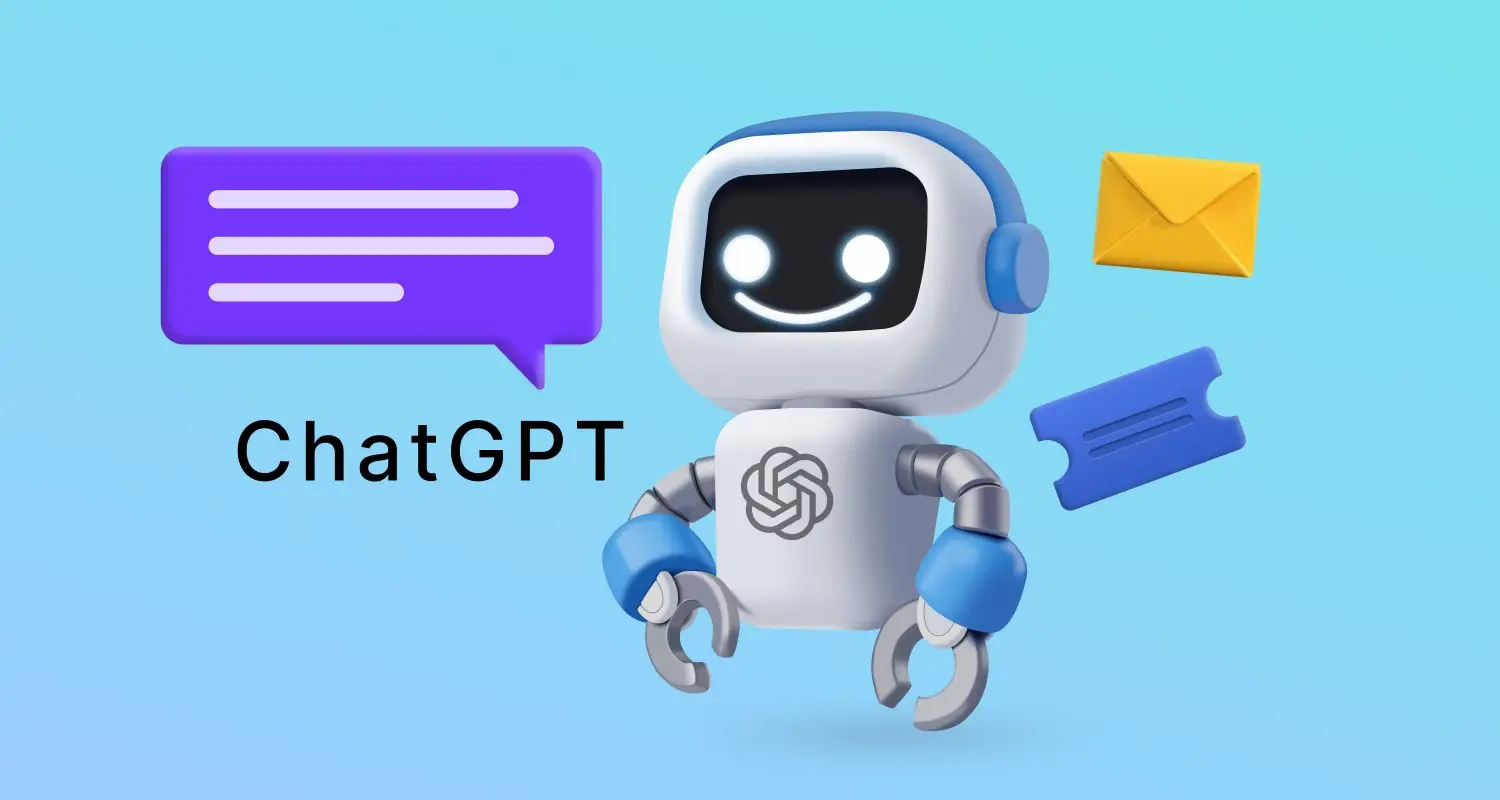Customer service teams are increasingly focused on leveraging modern technology to enhance customer experiences.
With the explosion of AI technologies, the expectations of what customer service departments should deliver are also escalating.
The use of generative AI tools has surged recently, with ChatGPT being one of the most widely used.
This article will delve into seven different ways to utilize ChatGPT in customer service and will also highlight the ways that it enhances customer service operations to ensure satisfied, returning customers.
In this blog we’ll look at Chart GPT and its relevance in customer service.
What is ChatGPT?
ChatGPT is an advanced machine learning model developed by OpenAI. Its main function is to comprehend and produce text that mirrors human language, depending on the input it is given.
This makes it incredibly useful in a variety of fields, including customer service.
This generative AI can be a massive aid to customer service teams in their daily operations. It offers a more engaging and tailored customer experience compared to traditional systems by providing immediate responses to customer inquiries.
In addition, ChatGPT gives customer service teams easy access to comprehensive solutions, enabling them to swiftly find necessary information.
How can you use ChatGPT for customer service?
ChatGPT employs machine learning to produce text that resembles human writing and can significantly improve customer service in several ways:
Quickly respond to customer complaints and feedback
ChatGPT can be programmed to identify and react to typical customer grievances, including problems with product quality, shipping delays, or billing mistakes.
Upon receiving a customer complaint, it can examine the content carefully, sort the ticket (message), and generate a response that both comforts the customer and suggests possible remedies to their issues.

The quick responses generated by ChatGPT aren’t limited to your help desk tickets. Service agents can also utilize it to swiftly address customer feedback across various channels, such as:
- Social media
- Product review sites
For instance, an agent can request this generative AI to construct a professionally toned, empathetic email to a dissatisfied customer.
This generative AI also allows users to specify the length of responses, facilitating the creation of concise replies for channels where messages may have strict character limits, like social media.
Summarize customer queries
Customer service excellence requires agents to comprehend customer issues and grievances fully.
It’s essential for agents to thoroughly read customer complaints and previous interactions to avoid redundancy.
While this practice enhances customer service, it can be very time-consuming.
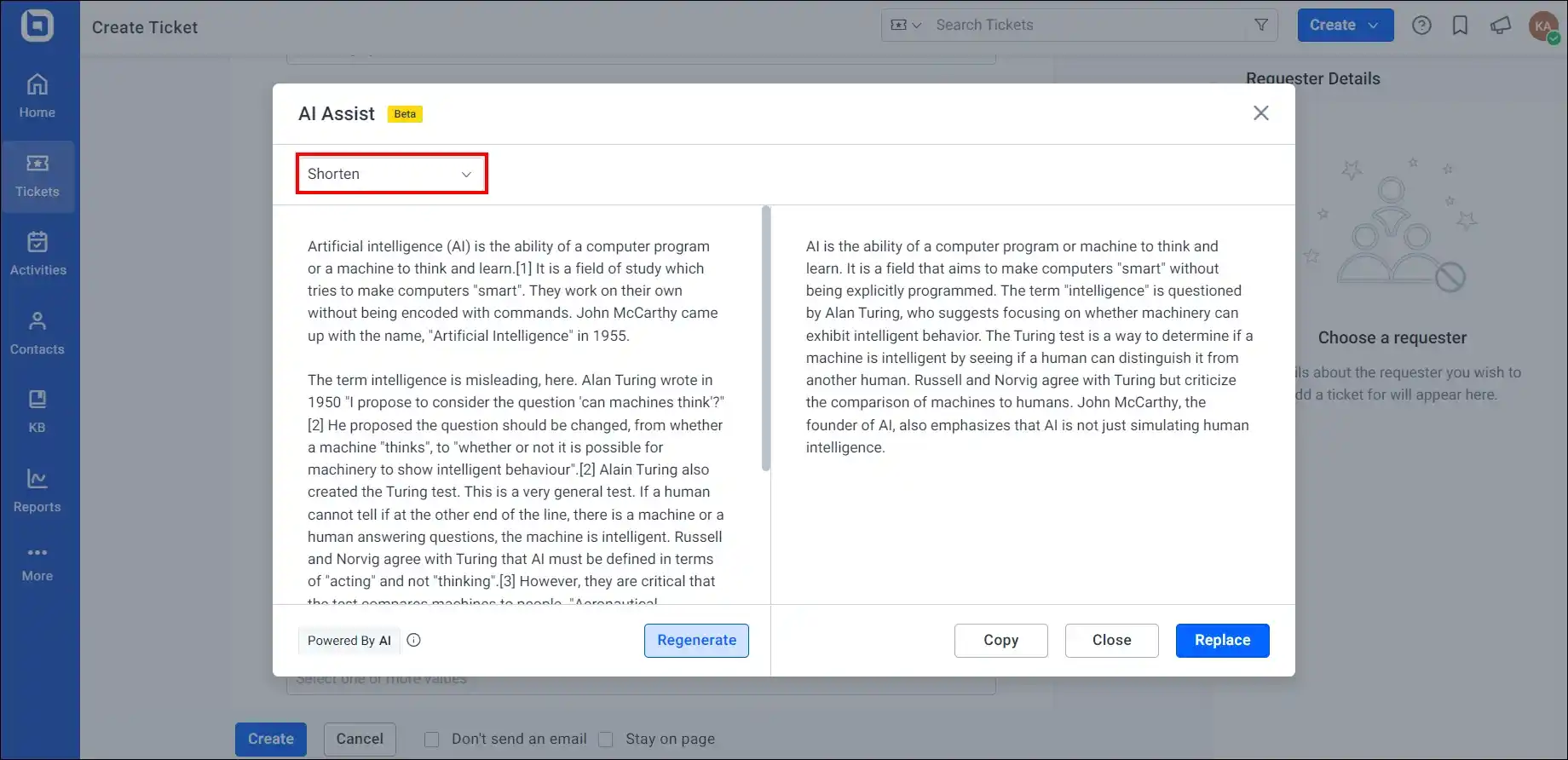
Agents can identify customer issues more efficiently by utilizing ChatGPT to summarize queries and past interactions.
For instance, an agent could input a customer’s complaint email into this generative AI and ask it to summarize the key points.
Categorize and prioritize conversations
A significant challenge for support teams is categorizing and prioritizing conversations to determine what should be done with them.
Which ones are the most urgent? Which ones have resolved an issue but require a follow-up? It’s difficult for agents to gather all essential information from a discussion.
This is especially true when a conversation spans dozens of replies. Even with carefully recorded notes and summaries, agents have to spend a considerable amount of time determining what has been covered and what remains to be covered, which is no small task when they’re flooded with tickets.
Integrating ChatGPT with your existing customer service systems can remedy this by automatically sorting customer conversations for agents. This ensures that no important issues are overlooked.
Quality monitoring
The pivotal role of customer service in determining a business’s success is no secret. According to a study by Salesforce, 96% of customers claim that excellent customer service fosters trust.
ChatGPT can be used for quality monitoring in customer service by analyzing past conversations between customers and service representatives.
The AI model can be trained to recognize good and bad examples of customer service based on factors such as:
- Politeness
- Responsiveness
- Clarity of communication
- Proper resolution of issues
This generative AI can also be used to provide real-time feedback to customer service representatives during active chats.
Furthermore, it can be used to generate reports on the performance of customer service representatives, identifying areas of strength and areas that need improvement.
Multilingual support and translation
ChatGPT isn’t restricted to only understanding English. Its multilingual support leverages the system’s large language model capabilities to serve customers who communicate in other languages.
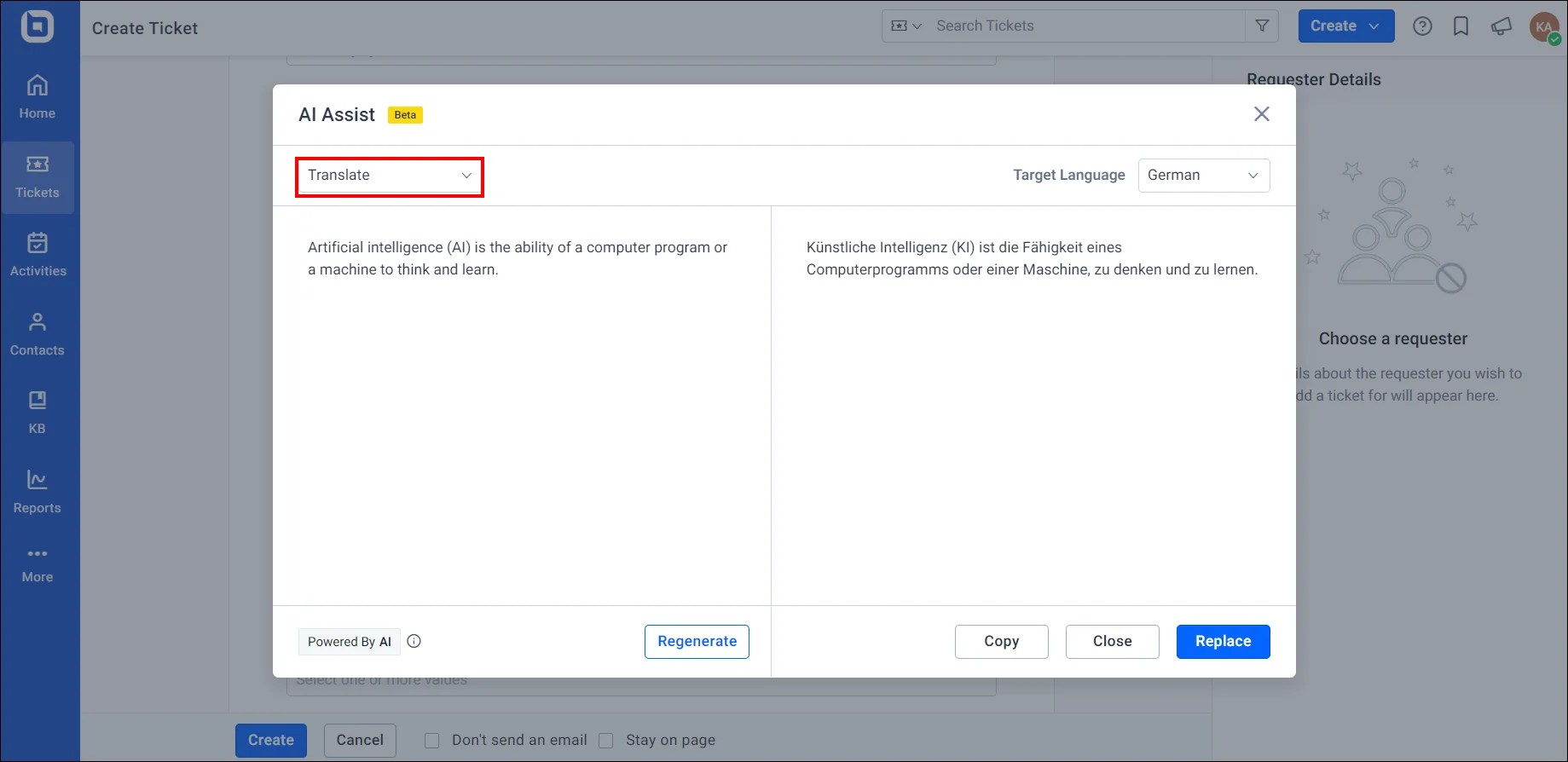
Delivering exceptional customer support should not be hindered by language barriers.
By integrating this generative AI into your customer support system, the multilingual support it provides adds value for your customers, leading to a more inclusive and accessible experience for a diverse customer base.
Sentiment analysis
Sentiment analysis, also known as opinion mining, employs natural language processing and text mining to interpret the emotional undertones of written material.
Its primary function in customer service is to spot dissatisfied or unhappy customers so that agents can address their issues before they worsen.
ChatGPT can comprehend the sentiment in a customer’s inquiry to help agents write responses that fit the customers’ feelings.
Benefits of ChatGPT customer support
Using AI for customer support provides a multitude of benefits that not only make operations more efficient but also improve the overall customer experience. Here are the key benefits:
Automation
ChatGPT can take over routine tasks like:
- Responding to commonly asked questions.
- Providing solutions for typical problems.
- Dealing with straightforward customer inquiries.
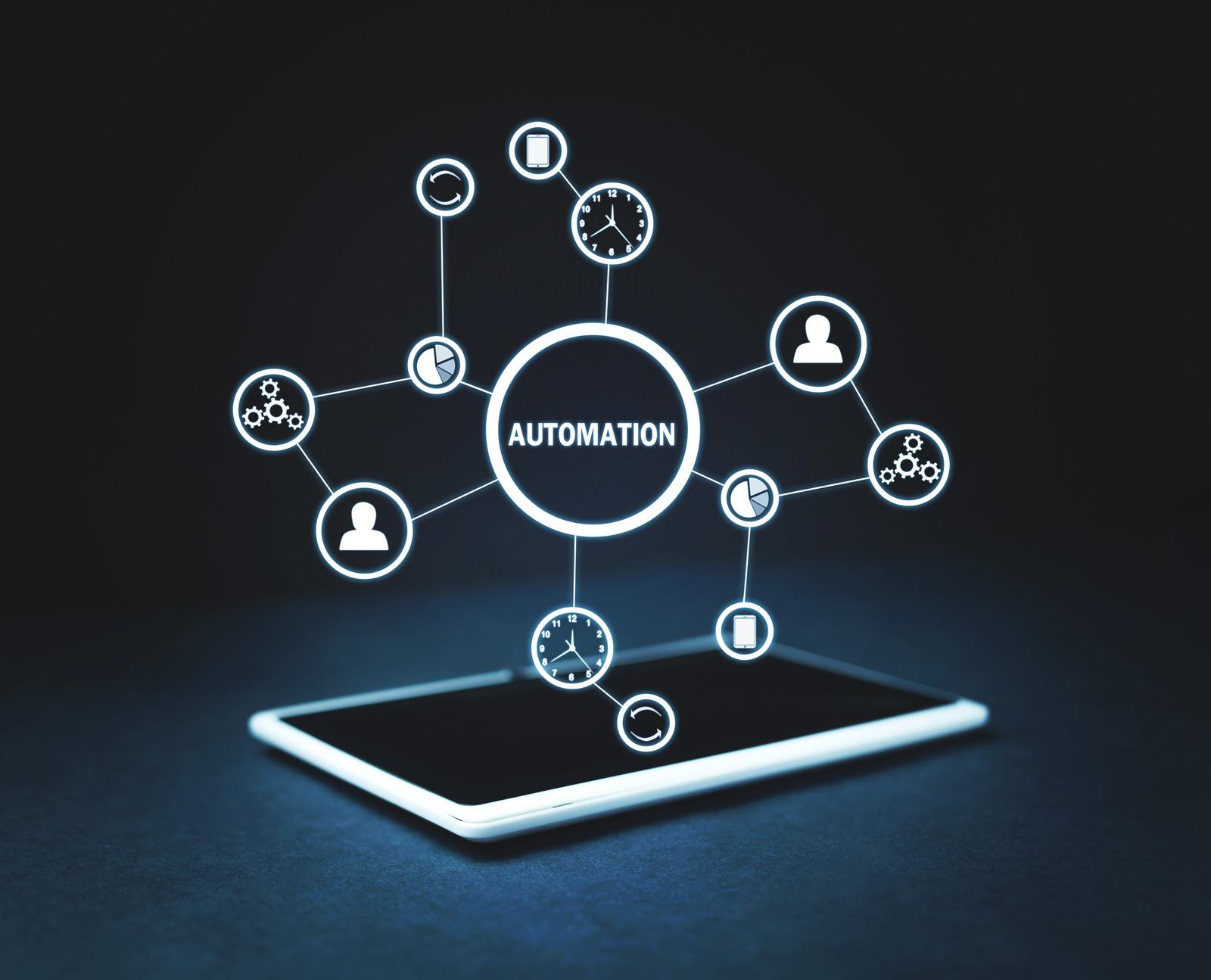
This allows customer service representatives to concentrate on tasks that demand human intelligence, insight, and creativity.
Applying ChatGPT enhances the productivity of customer service and the improves the client experience, as well as minimizes the risk of errors.
Quick responses
A study by Forrester revealed that 66% of consumers believe that the best way companies can offer an exceptional customer service experience is by valuing their time.
With ChatGPT assisting your support system, customers no longer have to endure long waits to receive responses. The AI can provide immediate responses that are just as accurate as those provided by human agents but delivered in a fraction of the time.
Lower the company’s expenses
Training human customer service representatives is time-consuming and expensive. With ChatGPT, you only need to train the model once and it can then be scaled to handle any volume of customer inquiries.
Furthermore, as your business expands, ChatGPT can effortlessly scale up to manage a larger number of customer queries without requiring extra investment in personnel and infrastructure.
Consistency in addressing similar customer inquiries
A distinctive voice aids in crafting your brand’s identity and establishing credibility and trust among your customers.
The flexibility of ChatGPT means that you can train it to provide consistent responses to customer inquiries, ensuring that every customer gets the same level of service.
With the proper setup, there is little to no risk of a customer getting conflicting or inaccurate information when a question is correctly formulated.
This generative AI is exceptional at ensuring consistency and precision in its responses. Therefore, businesses leveraging this generative AI in customer support offer uniform answers to customer questions, regardless of the support channel utilized.
Limitations of ChatGPT for customer service
Before you become overly enthusiastic about ChatGPT, it’s crucial to take into account some significant constraints.
Lack of personal touch
Ultimately, ChatGPT is an AI. While it mimics human conversation, it still lacks emotional touch.
ChatGPT is often criticized for delivering impersonal, mechanized replies that do not adequately meet customers’ requirements or worries.
Clients value the personal connection that human interaction brings, which is missing with ChatGPT customer service.
Inability to carry out multiple tasks at once
Chatbots like ChatGPT are designed to handle one conversation at a time. This means they cannot multitask by addressing multiple issues or speaking to multiple customers simultaneously.
If multiple queries are sent to it at once, the chatbot may not be able to handle all of them accurately or may only respond to one at a time.
Lack of creativity
While ChatGPT can generate responses based on its training, it may lack the creativity and spontaneity of a human agent.

It’s limited to what it’s been trained on and may not be able to think outside the box to solve a novel or complex customer issue.
In situations where a creative or unique solution is needed, ChatGPT may fall short.
Limited to text
As ChatGPT is primarily a text-based model, it cannot handle queries or complaints that require visual or auditory understanding.
ChatGPT prompts for customer service
ChatGPT can be an effective tool for customer service, providing real-time assistance to customers through chat interfaces. It can also be a great tool for training customer support agents.
ChatGPT has an advanced AI language model that excels at grasping both sentiment and context, enabling it to generate precise and relevant replies when given specific inputs.
These inputs are referred to as ChatGPT prompts. Each prompt is made up of key terms and phrases designed to initiate a response.
These prompts initiate interaction between the generative AI and users, with more detailed and contextual prompts yielding improved responses.
When you present ChatGPT with a query or command, it generates a response as if engaging in a dialogue.
Consequently, ChatGPT can serve as an invaluable resource for training customer service representatives, showing them how to interact with tact and professionalism.
Following are eight example ChatGPT prompts for customer service agents to learn from during training.
1. Prompts for general customer service
These are scripted lines or inquiries designed to kick-start an interaction with a customer in need of help or support.
They represent an initial touchpoint where customer service agents connect with clients and tackle their questions.
Such prompts often contain a warm welcome and a prompt for the customer to describe their reason for reaching out.
Prompt:
A customer is having trouble logging in to their account. Write a clear and concise script for me to explain potential reasons and walk them through troubleshooting steps.
ChatGPT’s response:

2. Prompts to show empathy to customers
This provides representatives with a selection of empathetic expressions and sentences, enabling them to find various methods to express the same feeling.
These prompts can assist customer service agents in establishing a connection with customers and demonstrating concern for their issues.
Prompt:
Please provide 5 empathetic phrases that customer service representatives can use to connect with customers.
ChatGPT’s response:

3. Prompt to handle product or service inquiries
Prompts like these are crafted to aid service agents in addressing inquiries regarding products or services.
Prompt:
A customer contacts us inquiring about what a service-level agreements (SLAs) is. They are interested in knowing how our SLA can benefit their business. As a customer service agent, offer the customer appropriate and satisfactory details.
ChatGPT’s response:

4. Prompt to create knowledge base articles
These prompts aim to generate knowledge base articles that can serve as training materials.
They help minimize the effort required to develop a self-service help center for customer support.
Prompt:
Please write a knowledge base article on “How to apologize to an angry customer as a customer service agent.”
ChatGPT’s response:

5. Prompts to resolve customer complaints and issues
These prompts are crafted to assist service agents in addressing and settling customer grievances.
This may require probing into the problem, proposing a remedy, and touching base with the customer afterward to confirm that their concern has been satisfactorily resolved.
Prompt:
A client is experiencing an issue with a specific feature of our product. Guide me to ask relevant questions to diagnose the problem and offer targeted solutions.
ChatGPT’s response:

6. Prompts to address shipping and delivery questions
These kinds of provided prompts aim to assist customer service agents in addressing issues related to shipping and delivery.
Prompt:
A client received their order, yet discovered an item was not included. Upon noticing the discrepancy, the client reached out for clarification. As a customer service agent, help resolve the client’s concern.
ChatGPT’s response:

7. Prompts to assist in billing and payment concerns
These prompts aim to offer guidance and support to customers experiencing difficulties with billing.
Topics addressed may include details regarding account information, understanding billing statements, and exploring various payment options.
Prompt:
A customer wants to check on the status of their order but doesn’t have their order number and payment details. Prompt me to gather necessary information to identify their order and provide an update.
ChatGPT’s response:

8. Prompts to manage cancellations and refunds
These prompts aim to assist customer service agents in handling cancellations and refunds.
They might address issues like cancellation procedures, refund requests, and the execution of refund transactions.
Prompt:
A customer is interested in returning a product. As a member of the customer service team, inquire about the reason for the return and recommend an alternative product. Should they decline the suggestion, assist them with the return process.
ChatGPT’s response:

Future of ChatGPT/AI in customer service
Technological advancements are constantly transforming the business landscape, particularly in customer service.
Customer service used to mean call centers and long waiting times.
Now, technologies such as ChatGPT and other generative AI have made customer service more efficient and effective, enabling businesses to offer 24/7 support, quicker response times, and personalized assistance while reducing the burden on support staff.
The outlook for ChatGPT and AI in customer service is promising. Potential future developments include:
- Seamless integration with additional technologies: It is very likely that ChatGPT and other generative AI tools will merge with other technologies like virtual reality and augmented reality, leading to more engaging customer experiences.
- Advanced problem solving: As AI technology advances, ChatGPT will gain the ability to manage more complex problems, reducing the need for human intervention.
- Enhanced accuracy: As ChatGPT and AI continue to be refined, responses to customer inquiries will be more precise and dependable.
- Heightened personalization: Through more extensive customer data analysis, ChatGPT and other AI systems will offer even more tailored recommendations and solutions.
Ultimately, ChatGPT and AI are already revolutionizing business-customer interactions, and they’re going to become even better.
However, there will be challenges along the way. The technology will need to overcome hurdles related to understanding the complexities of human language and emotions, and learn how to maintain the human element in customer service.
Concerns regarding privacy and security will also need to be addressed as AI technology becomes more dominant in customer service.
Conclusion
ChatGPT is transforming the role of AI in customer service, showcasing unprecedented capabilities that were previously only conceptual.
Experience the best ChatGPT integration for customer service with BoldDesk help desk software.
Register for a free trial today to see how BoldDesk can boost your support team’s efficiency. If you have any queries, don’t hesitate to reach out to the BoldDesk support team.
If you’re interested in seeing how BoldDesk can be tailored to meet your business needs, we’re more than happy to schedule a live demo for you.
Related articles
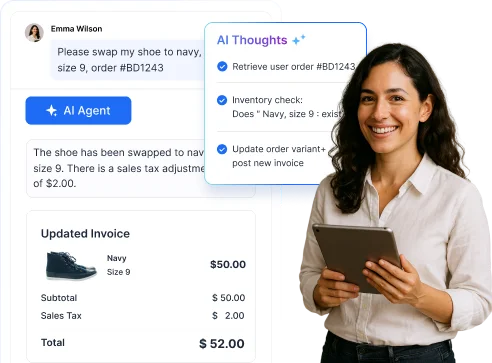


















 Email Ticketing System
Email Ticketing System Shared Inbox Software
Shared Inbox Software Multi Brand Help Desk
Multi Brand Help Desk Internal Help Desk Software
Internal Help Desk Software Trouble Ticketing Software
Trouble Ticketing Software Mobile Help Desk
Mobile Help Desk 









